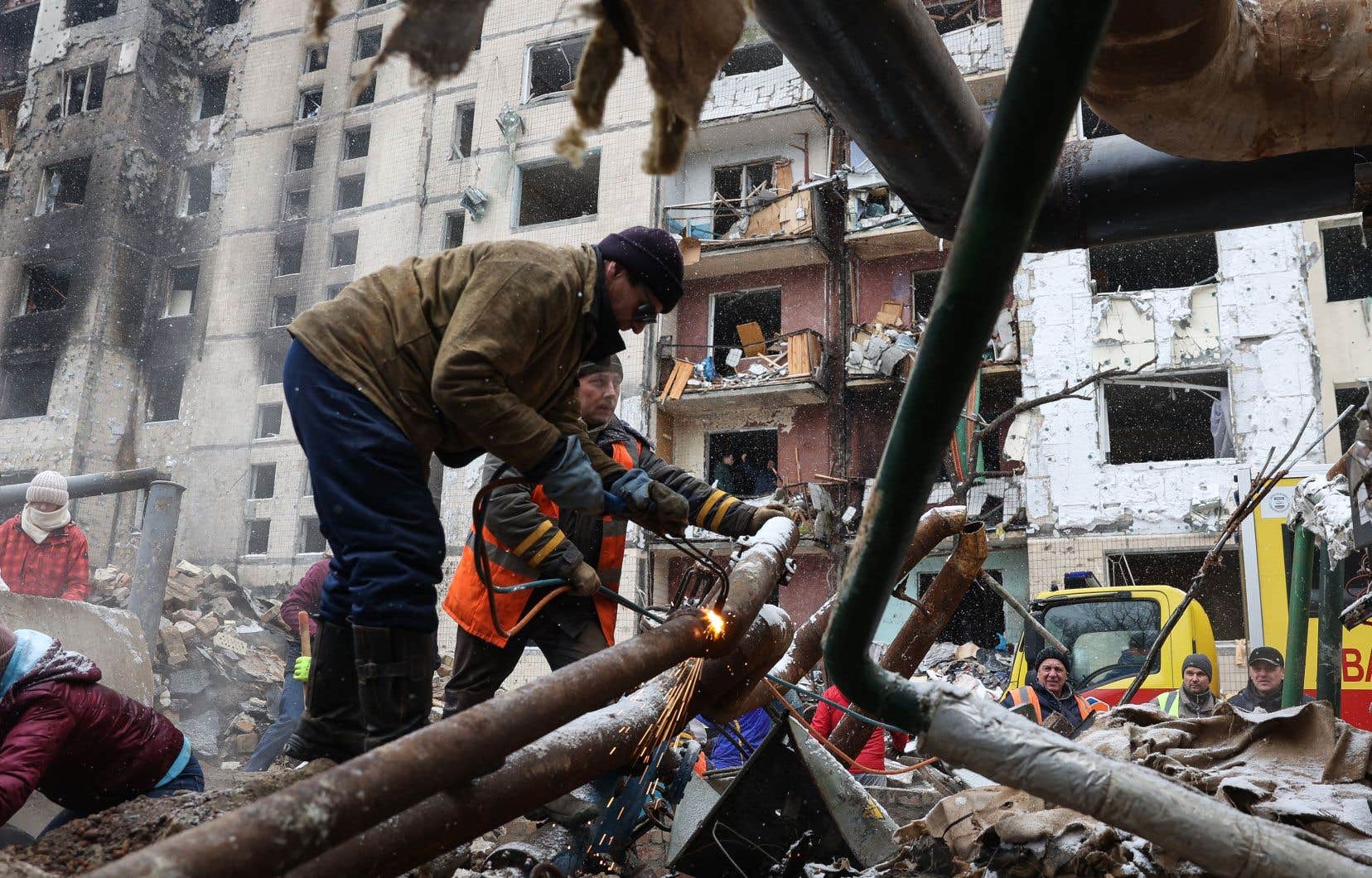The recent massive Russian strikes against major Ukrainian cities aim, according to experts, to exhaust the population and the anti-aircraft defense of Ukraine, which has once again requested more weapons from its Western allies.
A NATO/Ukraine meeting will also be held on this subject next Wednesday in Brussels, at the request of kyiv, announced the organization’s spokesperson Dylan White.
According to Ukrainian President Volodymyr Zelensky, Russia fired nearly 300 missiles and more than 200 Shahed explosive drones, in two attacks, on December 29 and on the night of December 1er on January 2, which caused the death of around fifty people.
A year after Moscow’s massive strikes on Ukraine’s energy infrastructure, this mid-winter campaign hit essential civilian facilities and residential neighborhoods, according to kyiv. As usual, Moscow claims for its part that it is only targeting military targets.
One of the Kremlin’s first objectives, explains Mick Ryan, associate researcher at the CSIS (Center for strategic and international studies), is to “test” the Ukrainian anti-aircraft defense, which has become more powerful thanks to the American Patriot system or even its French-Italian equivalent SAMP/T MAMBA.
Moscow is seeking to start a race against time, hoping that “Ukraine will run out of interceptors before Russia runs out of missiles and drones,” notes this retired Australian general on X (ex-Twitter ).
The defense industry targeted
Russia has moved into a war economy, while the West is struggling to supply the necessary quantity of surface-to-air anti-aircraft missiles, much more complex and costly to manufacture than certain drones built partly from civilian equipment.
The main target of Russian strikes is as such “the defense industry” which kyiv is trying to strengthen in the face of declining Western arms deliveries, analyzes the British Ministry of Defense.
The Russians “are now trying to attack the military-industrial complex, companies, not energy infrastructure (unlike last winter, Editor’s note), but weapons production,” military analyst Mykola explains to AFP. Bielieskov, of the Ukrainian Institute for Strategic Studies.
“We have started to produce more weapons than before,” Sergiy Zgourets, director of the Ukrainian Defense Express research center, told AFP, referring to munitions, drones, armored vehicles and radars.
To achieve these targets, “the sequencing and mixing of Russian projectiles have changed, they have become more complex,” explains Stéphane Audrand, French consultant in international risks, to AFP.
The commander-in-chief of the Ukrainian army thus described on Telegram the range of projectiles used by the Russians during the attack on the 1er-January 2: drones, modern cruise missiles, other older ones and ballistic missiles.
Ukraine also claims to have shot down 10 Kinjal hypersonic missiles on this occasion, although presented as “invincible” by the Kremlin.
Psychological pressure
The objective of Russian strikes is also, as since the start of the war in February 2022, to undermine the morale of the population.
“Russian “victories” on the ground are local and achieved at an exorbitant human cost. (Vladimir) Putin is therefore trying again this other lever of pressure,” analyzes Tatiana Kastouéva-Jean, of the French Institute of International Relations.
“‘I will not give up, I am ready for anything, you will suffer without respite and die if you do not comply with my conditions’ – this is his message,” she explains, interviewed by AFP.
The Russian president also addresses the West, wanting to prove that “support for Ukraine only prolongs the suffering of the population and makes Ukraine a financial pit, where the infrastructure expensive to rebuild can be hit again and again,” according to her.
These attacks are finally taking on a dimension of retaliation, believes Tatiana Stanovaya, the founder of R. Politik, a center for analyzing Russian politics. After the Ukrainian strikes on the Russian city of Belgorod which left 25 dead on December 30, Vladimir Putin sent the following message: “Ukraine cannot attack us without consequences,” she said.
Faced with this Russian campaign, the head of Ukrainian diplomacy, Dmytro Kouleba, requested the acceleration of Western deliveries of “additional anti-aircraft defense systems, combat drones” and “missiles with a range of more than 300 kilometers “.
A message relayed by Poland, which called on Wednesday to equip Ukraine with long-range missiles to respond to Russian attacks.
kyiv is also waiting for the F-16 fighter jets promised by several European countries, which can participate in anti-aircraft defense with air-to-air missiles.
